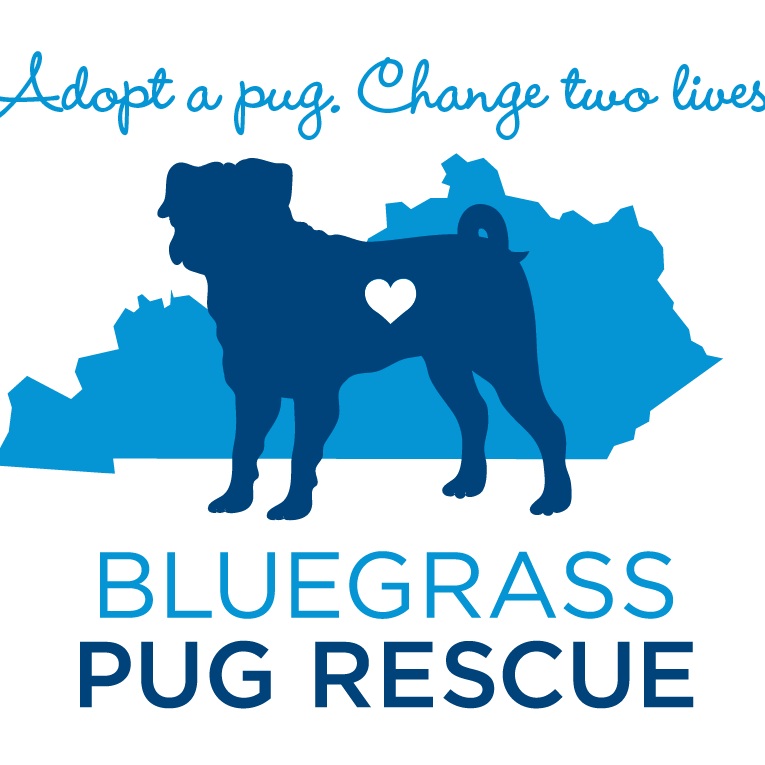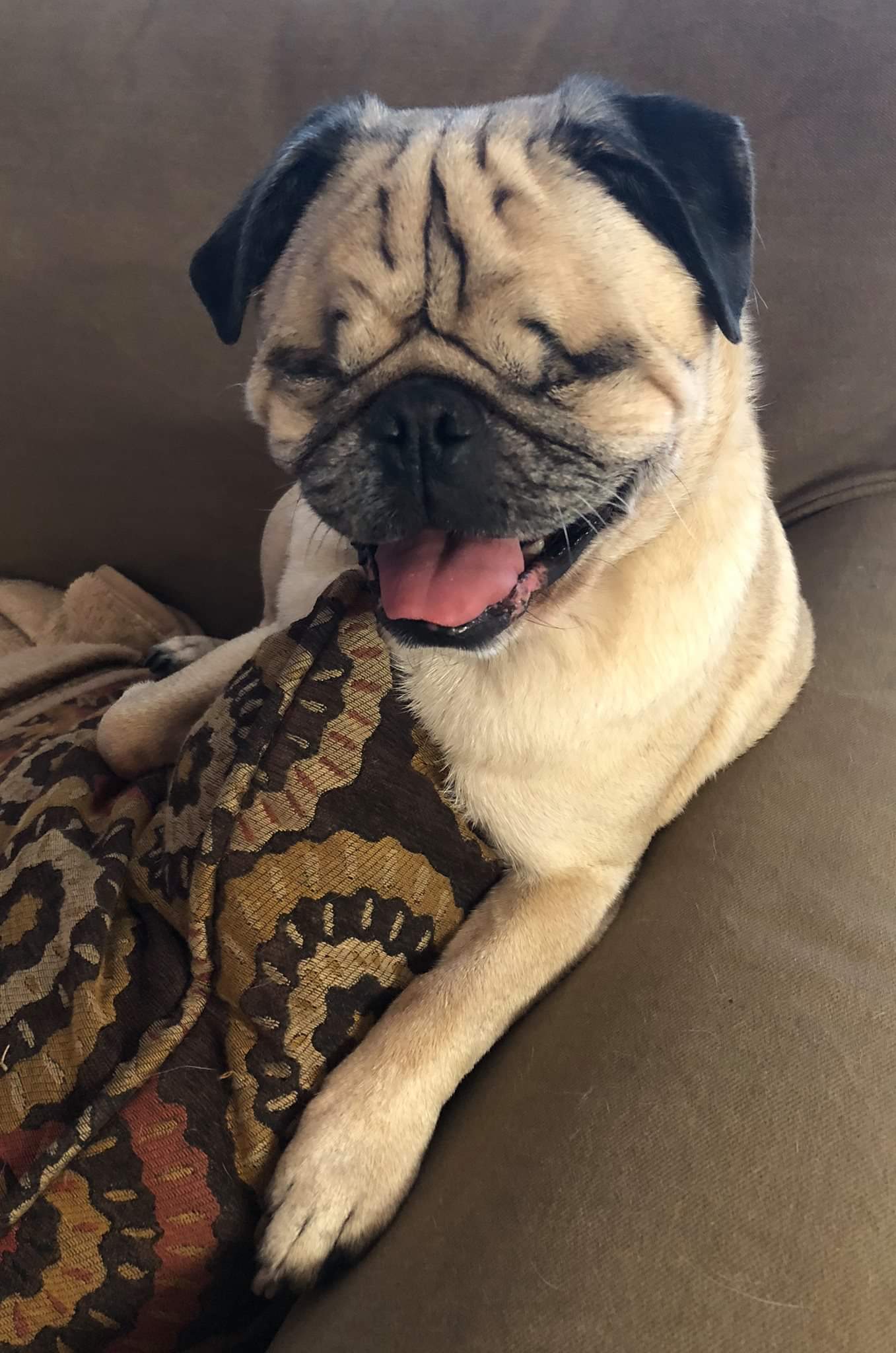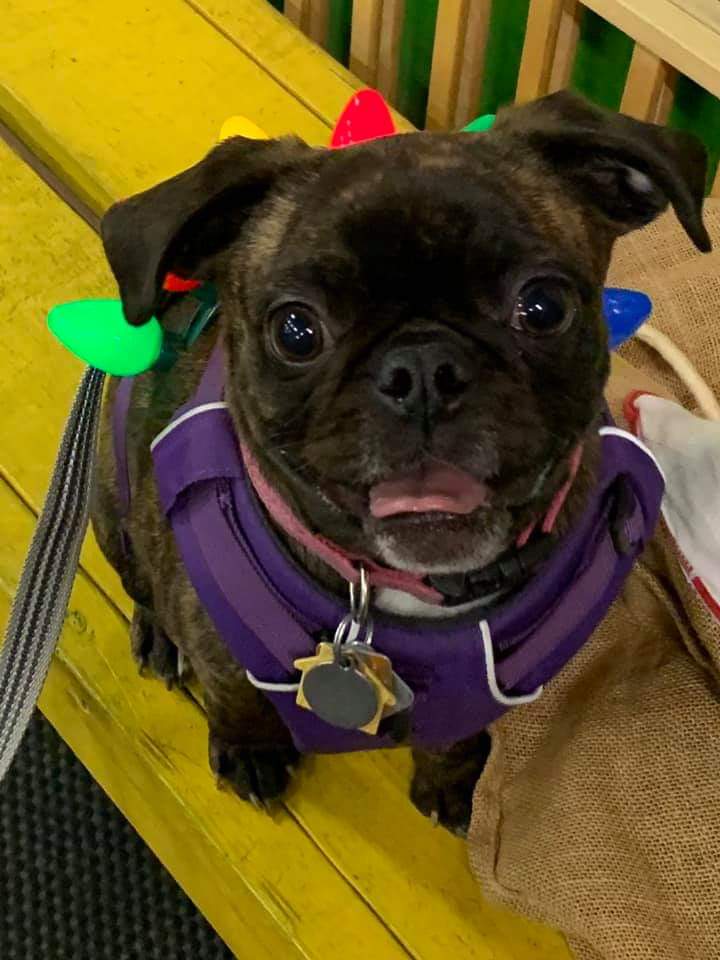DO I WANT TO ADOPT A RESCUE PUG?
Adopting a rescue Pug is not for everyone.
No Pug is perfect, rescues included. Remember that many of our rescue Pugs may have issues whether health or behavioral which may have caused them to be placed into rescue. Some issues may be a result of neglect, abandonment or simply a poor home environment. BPR will always disclose any known information about specific health or behavioral issues a Pug may have. Adopting a rescue Pug requires a commitment from you to work with your adoptive Pug to help them learn to trust you and blend into your family. They can’t do this overnight or by themselves. It takes a minimum of six to eight weeks to acclimate to their new home. If you are not willing to work with the Pug to address any issues that develop during and after this period, please do not complete the application. BPR will always take a Pug back into care if an adoption should fail, but know that you are expected to do everything in your power to address the problem first. BPR will provide you with support and resources to be successful, but your commitment is crucial to the success.
Reviewing the following Pug Facts may help you decide if adopting a rescue Pug is for you:
Pugs SHED.
Pugs are very sensitive to cold and hot temperatures.
Pugs require air conditioning in the summer. Pugs have short noses, which means that they basically don’t have any way of regulating their body temperature. As a result they can overheat easily .
Pugs are not watch dogs. They would lick someone to death and that’s about it.
Pugs snore. Almost as much as they shed. If you are a light sleeper, a Pug is probably not your best bed companion.
Pugs are stubborn. Most often when it involves food or housebreaking. (You should assume your new Pug is not completely housebroken and work from there.)
Pugs are not high maintenance, but they do require some routine care. The wrinkles on their face need to be cleaned. The wrinkles are a perfect place for moisture that can cause itching, irritation, or even an infection. A Pugs ears need to be cleaned for the same reasons.
Pugs are very smart. They are inquisitive and playful, but love to do things to please you. With patience and plenty of treats your Pug can be a pretty good student.
Pugs are very social. Anyone that will play with them or give them attention is a Pug's friend.
Pugs love to snuggle up and take a nap with you. Or on top of you.
Pugs are very attached to their humans. They are clingy. Also known as "Velcro" Pugs.
Pugs are so full of love and personality, it's hard to believe they are as small as they are.
Pugs are little clowns. They will show off and do funny things to get your attention. They are famous for the head tilt.
Pugs LOVE food. If given the opportunity, a Pug will eat until everything is gone or it explodes. Whichever comes first.
No outfit is complete without dog hair. Pugs shed.
Before Adopting a Pug, You should ask yourself the following questions:
How much it will cost to feed and train a Pug?
How much time will it take to groom the Pug?
How much time will it take to exercise a Pug on a daily basis?
Are Pugs suitable for children?
How much will it cost for vet bills, pet or dog health insurance, medication and vaccinations?
How many hours am I home?
Will that be enough time to feed and exercise my Pug in addition to my other activities?
How many animals do I currently have?
Can I reasonably expect to give each one enough attention on a daily basis?
Do I have new carpet or furniture?
Will I be upset if they get ruined by chewing or because of housebreaking problems?
Do I make enough money to provide yearly vaccinations, heartworm and flea monthly preventatives, and two or three vet visits per year, assuming the Pug I adopt remains healthy?
Can I provide quality food, treats, toys, harness, leash and other assorted necessities?
Is my home situation stable?
Am I planning on moving soon?
Am I starting a new relationship or ending an old one?
Am I expecting a human baby?
Am I willing to take on all responsibilities for the life of the Pug including special care as the Pug ages?




